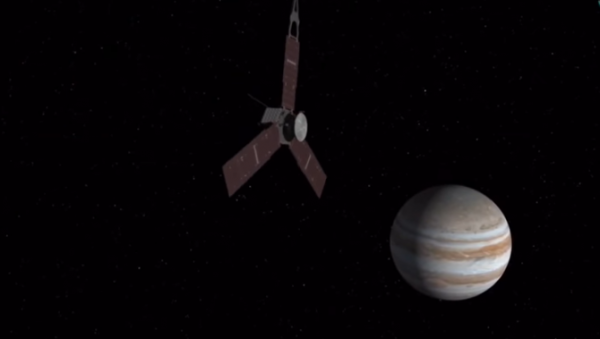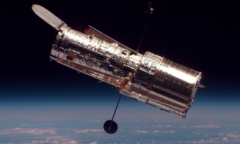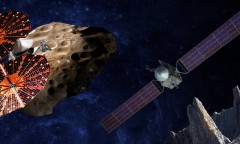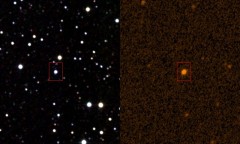By Girish Shetti, | January 23, 2017

NASA has resorted to public voting to determine the next photos of Jupiter. Juno will take several photos of Jupiter during its its close encounter to Jupiter on Feb.2. (YouTube)
Where should NASA's Juno spacecraft camera aim at during its close encounter with Jupiter on Feb.2? This is the question that NASA has asked the public to vote on starting Thursday, January 19 at 11:00 a.m. PST (2:00 p.m. EST). The voting will close on January 23 at 9:00 a.m. PST (noon EST).
Like Us on Facebook
The voting will take place on NASA's JunoCam website: https://www.missionjuno.swri.edu/junocam/voting/
"We are looking forward to people visiting our website and becoming part of the JunoCam imaging team," said Candy Hansen, Juno co-investigator from the Planetary Science Institute, Arizona. "It's up to the public to determine the best locations in Jupiter's atmosphere for JunoCam to capture during this flyby."
Juno will take photographs of Jupiter's North Pole region and will depart from the South Pole after concluding its imaging process, which is likely to last for nearly two hours.
Hansen claims that these photographs will help Juno's science team to ascertain what goes on in Jupiter's atmosphere.
JunoCam is a color, visible-light camera that is specially designed to take high-quality photographs of Jupiter. This specially designed camera was fitted into the spacecraft.
NASA will reportedly reactive the voting system every time Juno spacecraft makes a close flyby of Jupiter. During each voting, several points of "photo-taking locations" that will be determined by JunoCam's field of view will be highlighted.
In the on-going voting, voters can choose from 21 points from where JunoCam will take photographs on Feb.2.
Juno spacecraft was launched in Aug. 2011 with the sole aim of enhancing our knowledge of Jupiter, the largest planet in our solar system.
Many scientists and astronomers believe that Jupiter was the first planet in our solar system to form. Therefore an in-depth study of Jupiter could further our understanding of the birth and evolution of our universe.
-
Use of Coronavirus Pandemic Drones Raises Privacy Concerns: Drones Spread Fear, Local Officials Say

-
Coronavirus Hampers The Delivery Of Lockheed Martin F-35 Stealth Fighters For 2020

-
Instagram Speeds Up Plans to Add Account Memorialization Feature Due to COVID-19 Deaths

-
NASA: Perseverance Plans to Bring 'Mars Rock' to Earth in 2031

-
600 Dead And 3,000 In The Hospital as Iranians Believed Drinking High-Concentrations of Alcohol Can Cure The Coronavirus

-
600 Dead And 3,000 In The Hospital as Iranians Believed Drinking High-Concentrations of Alcohol Can Cure The Coronavirus

-
COVID-19: Doctors, Nurses Use Virtual Reality to Learn New Skills in Treating Coronavirus Patients












